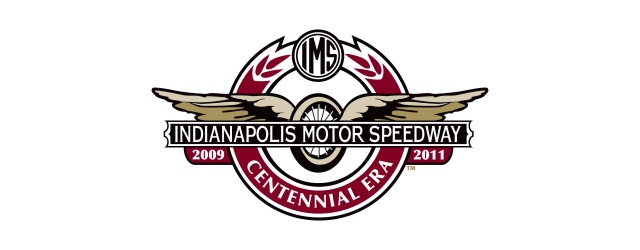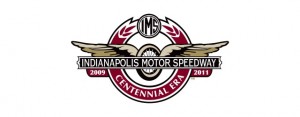
From IMS
INDIANAPOLIS, Monday, Sept. 30, 2013 – George Bignotti, the most successful chief mechanic in the history of what is now known as IndyCar racing, died Friday, Sept. 27 at his home in Las Vegas. He was 97.
From an era when legendary chief mechanics like A.J. Watson, Clay Smith and Clint Brawner were as well known as just about any of the drivers, the name of George Bignotti would rank right at the top. Winner of the Indianapolis 500 a record seven times, his total number of wins as a chief mechanic in IndyCar racing totaled an astounding 85, also a record.

The San Francisco-born Bignotti always seemed to have the remarkable ability of aligning himself with the very best in the business, whether it was the car owners, the drivers, the equipment, sponsors or the support staff, with many a future chief mechanic having benefited greatly from a stint under his guidance. The conclusion that it could well have been him alone who was the magic ingredient within a team could understandably be drawn because his seven Indianapolis 500 victories came with six different teams: A.J. Foyt with Bignotti-Bowes Racing in 1961, Foyt with Ansted-Thompson Racing in 1964, Graham Hill with John Mecom Jr. in 1966, Al Unser with Vel’s Parnelli Jones Racing in both 1970 (leading 190 of the 200 laps) and 1971, Gordon Johncock with Patrick Racing Team in 1973 and Tom Sneva with Bignotti-Cotter Racing in 1983.
In addition to a few other potential “500” victories which slipped away, Bignotti-wrenched cars finished either second or third on eight other occasions at Indianapolis with Johnny Boyd, Roberto Guerrero and Joe Leonard, plus Foyt, Johncock and Al Unser. Others who drove Bignotti-prepared cars in the “500” – some of them leading – included Jackie Stewart, Mario Andretti and Rodger Ward, while still others at various times and at other tracks included Jimmy Reece and George Amick, John Surtees, Fred Agabashian, Wally Dallenbach, Bob Veith, Bobby Marshman, Swede Savage, Jud Larson, Walt Faulkner, Kevin Cogan and Geoff Brabham.
For year after year in USAC National Championship competition, Bignotti enjoyed a virtual stranglehold on the series. He won the season title with Foyt in 1960, ’61, ’63 and ’64, with Al Unser in 1970, and yet again in 1971 and 1972 as co-chief mechanic with Johnny Capels and driver Leonard.
Originally introduced to racing by his brothers, Al and John, George Bignotti became a major force in Northern California midget car racing right after World War II, winning the Bay Cities Racing Association title with Agabashian in 1946 ,’47 and ’48, and again in 1951 with Boyd. Bignotti was so successful in the then-lucrative sport that he gave up his job in the ship building business to devote full time to racing.
“I was actually on the Golden Gate Bridge when I came to that decision,” Bignotti once said, laughing. “I had to cross that darn bridge twice a day, and I got fed up with the traffic jams. When I was inching along at a snail’s pace and got rear-ended by sailor, I decided that was enough for me!”
When the popularity – and corresponding financial benefits — of midget car racing plummeted in the late 1940s, Bignotti continued to race on the side but became involved in profession most unlikely for a racing mechanic.
“I became a florist!” he once said with a chuckle. “It was actually my mother-in-law’s business. Meanwhile, I was still involved in midget racing, and I never had any intentions of ever going back to Indianapolis, although Agabashian kept pressuring me. I always told him, ‘No, but if ever you run into an emergency situation, call me.’
“One day in May 1954, I was balancing on top of a ladder in the flower shop, putting the finishing touches to some redecorating we had done, when the phone rang. It was Fred pleading with me to go back because he was with a team which had a chief mechanic who hadn’t worked out. He told me there’d be a plane ticket and a hotel room, so back I went. By the time I arrived, my old friend Frankie Del Roy (later USAC technical chairman) was already on board to do the engine, so I became the chassis man and we finished sixth with Agabashian.”
After a fifth-place finish with Walt Faulkner and relief driver Bill Homeier in 1955, Bignotti entered the entrepreneurial side for 1956 by joining forces with Bob Bowes II to form Bignotti-Bowes Racing. Boyd later laughed that not only had been taken a “cut in pay” to drive for Bignotti by signing on for a retainer of only $350, but that when he and Bignotti loaded up the brand-new Kurtis/Offy to tow it back to Indianapolis and Boyd learned that they had no spares, he returned the retainer to Bignotti to purchase an extra set of shocks.
After coming close to winning several times with Boyd during the next three years, Bignotti finally scored a USAC win with Jud Larson on the Phoenix 1-mile dirt track at the end of 1958.
Then, from the beginning of 1960 until June 1965, history was to be made time and time again by the fabulously successful, albeit frequently tempestuous pairing of Bignotti and Foyt. Over that five-plus year period, punctuated by a stormy parting of the ways and a regrouping not of their own doing, the iconic pair netted an amazing 27 wins, including 10 in 1964. There were only 13 races total that year, and Bignotti always would stress that he was not the chief mechanic on the two less-than-successful outings Foyt had with a rear-engine car.
That record was matched six years later when Al Unser won 10 out of 18 events in Bignotti-wrenched cars for Vel’s Parnelli Jones in 1970. An 11th race also was won by Leonard in a team car. Between 1968 and 1971, Unser won 25 times for Bignotti.
Never complacent, the canny Bignotti always looked for an advantage and often found one through rather unconventional channels.
Choosing to work in a long white coat, which made him look more like a doctor or a dentist, his garage always was open to visitors.
It seemed to attract a procession of engineering types who would generally tend to be mechanically inclined enthusiasts who had no connection with racing. While other crew chiefs were generally never particularly open to suggestions by outsiders, Bignotti was an exception, discreetly escorting an enthusiastic physics professor or an aerodynamicist to a quiet corner and then hanging on their every word.
But as Parnelli Jones has noted within the last few days: “George was strong-minded and gave us very reliable cars that were not always the most innovative or flashy, but always fast enough to win. We always wanted to think outside the box and constantly be innovative, but George pushed back to make sure we were steady and could go the distance and finish – that’s what wins races: finishing every lap.”
Ever the strategist, Bignotti always enjoyed telling the story of Al Unser winning the “500” pole in 1970.
“We drew a really bad number and were all the way down near the end of the line,” Bignotti said. “Qualifying started, and for the next couple of hours, we’d be pushing the car forward another few feet every time another car would go out at the head of the line. Everybody thinks you are just passing the time by talking to your friends, but what I was doing was listening to the P.A. Every time another driver qualified and was being interviewed, I’d listen to what he was saying. You know, ‘It was pushing in Turn 3,’ or ‘It was loose’ or ‘It’s pretty windy up at the north end.’ Well, I would consider who the driver was and whether or not I thought he really knew his stuff, and I’d make a decision. Some of my crew guys were starting to get a little irritated with me, but you know what? By the time Al finally went out, we had made five separate changes to the setup just sitting there without turning a single lap. And we won the pole!”
Honors amassed by Bignotti throughout his career were justifiably numerous. In 1975, he was inducted into the Auto Racing Hall of Fame, followed in 1993 by induction into the National Auto Racing Hall of Fame.
Possessing talents well beyond racing, he was a shrewd businessman, an avid golfer (typically playing three times a week until quite recently and able to shoot “beneath his age”) and perhaps rather surprisingly, in the words of an admiring lady friend a number of years ago, “Positively the best swing-dancing partner I ever encountered.”
He was a wonderful story teller and was extremely sharp until very near the end when his health began to fail. He was cared for in his final years by his estranged second wife, Kay Meyer, the daughter of three-time “500” winner Louis Meyer and the sister of “Sonny” Meyer, both fellow Hall of Famers.
In addition to Kay Meyer, Bignotti is survived by his daughter, Mary Mendez, and two grandsons by his late son, William “Billy” Bignotti, who was also a chief mechanic.
Although primarily a “West Coaster,” Bignotti was a devoted fan of the Indianapolis Colts and the New York Yankees, and he chose to be interred at Crown Hill Cemetery in Indianapolis.
There will be no public ceremonies, although a celebration of Bignotti’s life is envisioned for some time next May in Indianapolis.

